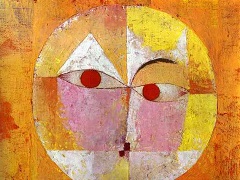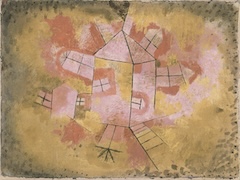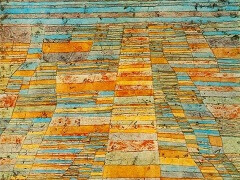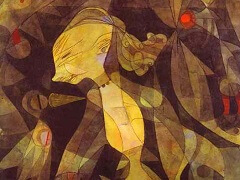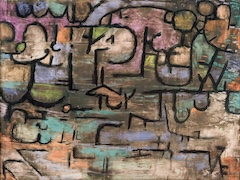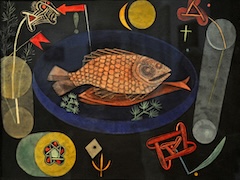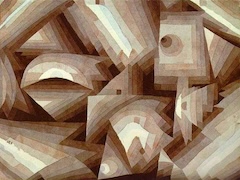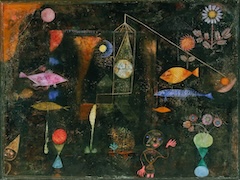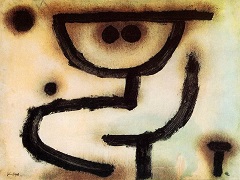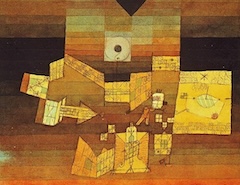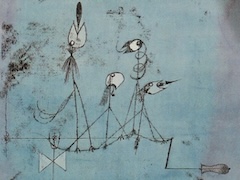Equals Infinity, 1932 by Paul Klee
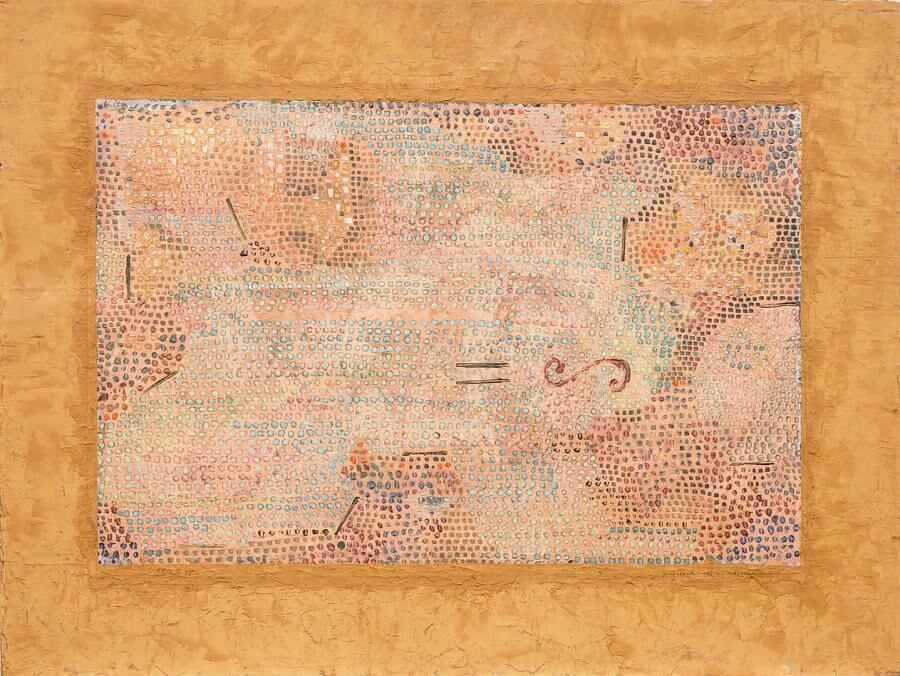
After 1932 Paul Klee began experimenting with a peculiar pointillist technique in his attempt to visually express the polyphonic principle in music. Klee, the son of a music teacher and a singer, played the violin and under his family's influence had early in his life set forth to becoming a musician, a pursuit he soon abandoned in favor of painting. His work as a whole is now often recognizably influenced by music yet it provides an encyclopedic variety of techniques, styles and themes. Geometry plays a key role in Klee's work as his compositions were at times dominated by geometric shapes: circles and orthogonal blocks, polygonal shapes, parallel lines and continuous curves, single strokes that fold to create forms. Places and caricatured human characters, theatrical compositions, imaginary animals and plants, political statements, autobiographical notes, mythological characters, sensations and even allusions to science are mostly presented symbolically in a simplistic, fairy - tale manner, often paradoxical, enigmatic or dream - like. In Equals Infinity, possibly an attempted oxymoron by the artist, Klee paints his lemniscate (the infinity symbol) as an f-hole of a violin, drawing thus parallels between Art, Music and Mathematics. Lemniscate - like structures appear in several other works by the artist, such as the eye structure of his Senecio

